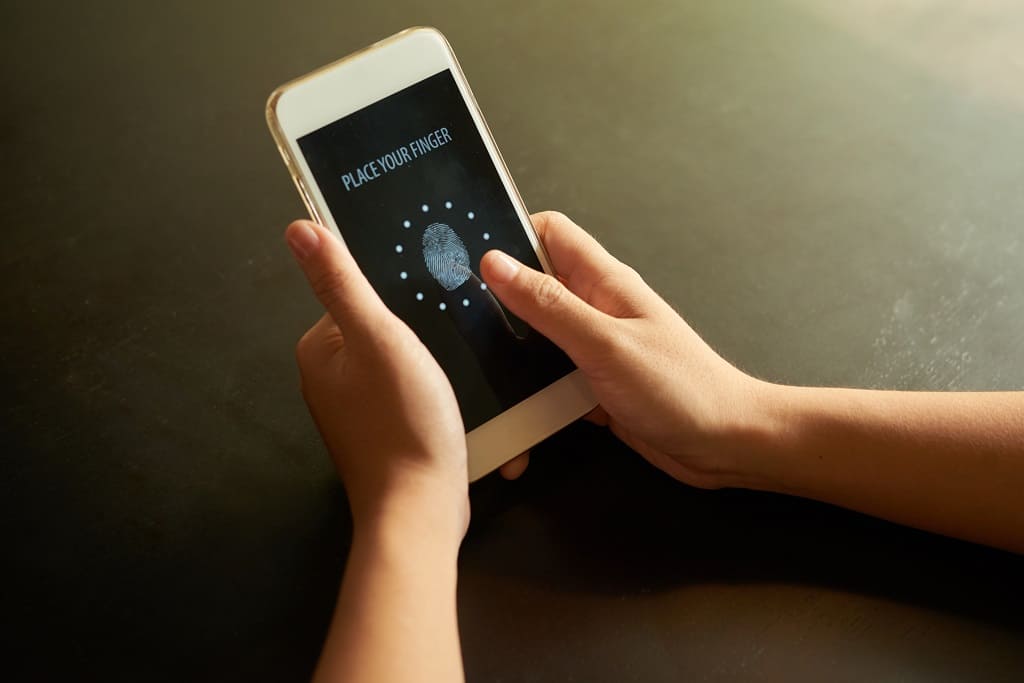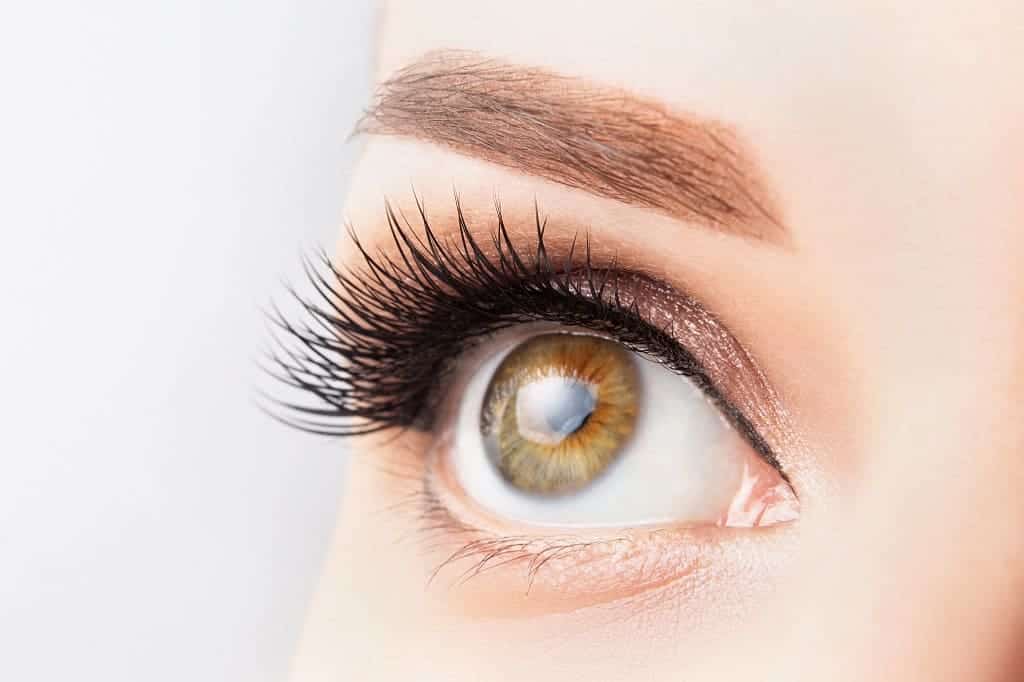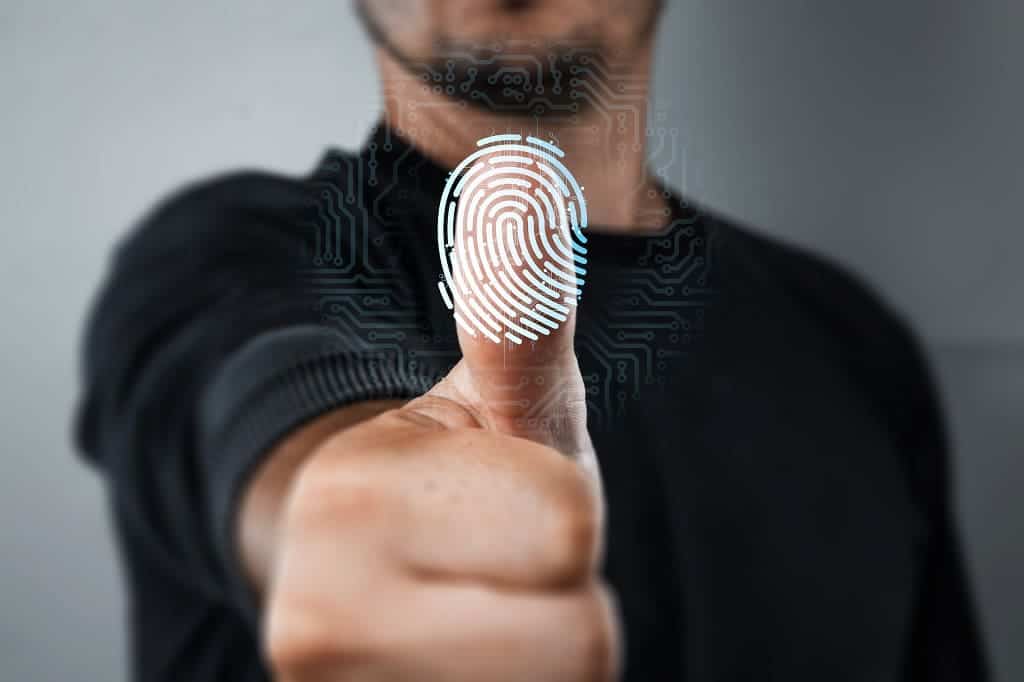You have certainly heard of it, but do you really know what biometrics are? Together with the digital signature, it is something that gives rise to a truly secure and effective authentication method that improves user experience. If you are interested in finding out what biometrics are, uses and its main trends, read this article.
Using our fingerprint to unlock our phone is something that can be done multiple times. This is undoubtedly one of the most common uses of biometrics. However, biometrics goes far beyond this, offering countless uses. Many of the applications of biometric technology provide many advantages to companies.
Biometrics is very important in today’s world as we can see that Spain is ranked 3rd in the EU in terms of companies using biometric technology for identification. In fact, according to Eurostat 20% of Spanish companies have used this authentication method in 2019.
What are biometrics?
Biometrics refers to automatic identification of a person based on his or her physiological or behavioral characteristics. It is a technology based on the recognition of a physical and non-transferable characteristic of people, such as fingerprint or facial recognition.
This definition is contained in the ISO/IEC TR 24741:2018 standard, which covers this field. This same standard includes the most frequent technologies in biometrics, which are: fingerprint, facial recognition, hand geometry, utterance and iris recognition, biometric data on the signature, etc
What are the main functions of biometrics?
Biometrics are mainly used for user authentication, to verify the user’s identity when participating in any process to access certain information or services. An example of this is when we electronically sign documents.
At this stage, we must emphasise the concept of digital authentication. This process allows to verify the identity of a person via electronic means. There are various types of digital authentication:
- Something the user ”knows” (login and password).
- Something the user may ”possess” (key card, SMS Token, OTP Token, etc)
- Something the user ”makes or is” (signature, utterance, fingerprint, iris or any other biometric factors).
Authentication may be 1 or 2 factor authentication, depending on the level of security required. The 2 factor authentication is considered robust authentication.

Biometrics and electronic signature: the biometric signature
The biometric signature adds physical and irrefutable evidence to create a legally binding digital signature. This feature records biometric information to identify the signer.
When talking about strong or multi-factor authentication, we should underline that biometric features can be combined with other non-biometric features. Thus, we can use them together with a password or an OTP code.
These types of signatures are drawn on numerous electronic devices – i.e, computers, mobile devices and signature pads. They can be implemented in both face-to face and remote environments. Biometric evidence can be added when eSigning any kind of document, when receiving a parcel, etc.
How to use the biometric signature?
The biometric signature is a truly handy tool for protecting digital identity. It is impossible to duplicate a fingerprint or an iris, or to copy a voice or the way a handwritten signature is drawn on a screen. This makes the biometric signature practically unforgeable.
This type of eSignature is now very important. A society where cybersecurity is used to protect digital identity. Indeed, according to the National Institute of Statistics (INE), crimes related to false documents have increased by 1,718 (27%) between 2016 and 2018, as this is the last year for which data is available.
Moreover, according to Finanso.se, one out of three European citizens has suffered from identity theft in the last two years. Yet this is the second most common type of fraud in Europe.
Trends in mobile biometric solutions
The use of biometrics are closely linked to mobile devices. This is due to the fact that both mobile phones and tablets support the collection of biometric data (e.g., device camera, microphone, fingerprint recognition, etc).
The AIMC reveals in their study that 91,5% of Spanish users surf the web from their smartphones.
Let’s highlight the main tools that are setting the trends in biometrics:
- Fingerprint
- Iris recognition
- Facial recognition via image or video
- Utterance or Speech recognition
- Handwritten biometric signature
Fingerprint
Fingerprints are one of the earliest biometric evidence to be deployed in mobile technology. It is certainly a feature that brings a high level of security, as it is a unique and non-transferable parameter which is difficult to replace.
In 2011 iPhone 5s started using this technology therefore it began to draw the attention of the general public
Iris Recognition
Iris recognition scans the user’s eyes with its system, so the user can access the required documents by looking at the front camera and placing the eyes in the camera scanner.
Iris recognition may also be combined with other existing security tools. If the fingerprint is invalid, or the password is forgotten or in cases when the security pattern does not work, we can scan our iris with the camera.

Facial recognition via image or video
The user can prove their identity through a selfie, so they can access the service required. This selfie can be taken with the device camera
It is an advanced technique that prevents fraud. For example, it detects whether it’s a photo on paper or from another screen to gain illegitimate access.
As with static images, it can also recognise a person’s identity by recording a video in which they make a particular gesture, such as smiling, blinking or nodding.
Utterance or speech recognition
Utterance and speech recognition is a biometric evidence based on the user’s voice to verify their identity.
This system is able to measure over 100 features when evaluating a voice and comparing this information with the voice print.
- A voice recognition is based on several models:
- Acoustic model: Identifies where the sound comes from.
- Linguistic model: Detects the language.
- Semantic model: Understands how the user talks and builds sentences.
- Statistical model: Collects phrases.
Handwritten biometric signature
We refer to the handwritten signature drawn on suitable devices. These devices must be able to capture the stroke, orientation, pressure, etc. That is, information that can be used to carry out an expert handwriting analysis.
iPads, Android or Wacom pads are suitable for these types of eSignatures.
These are some of the most advanced biometric technologies for mobile devices. Each one offers different advantages. Therefore, the most suitable solution is to apply or develop solutions based on the combination of these technologies, thereby offering a greater level of security and different options for the user.
Here at Viafirma we bring the benefits of biometrics closer to our users with our eSignature solutions. These allow to record biometric evidence, together with other authentication factors when signing any type of document.
In this way we add enough evidence to the signature to verify that the signatory is the actual person who signed the document. All of the above-mentioned biometric evidence is present in our solutions.
Although the advantages of biometrics are now clear, companies and experts still continue to improve their features.
This is evidenced by the MOMENTuM project, which focuses on developing a multi-biometrics suite for security and access control on mobile devices. This is an initiative in which we were involved along with other leading companies in the field of innovation in 2016.
